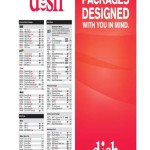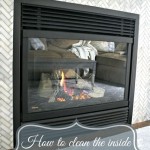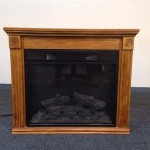Fireplace Remote With Thermostat: Enhancing Comfort and Control
A fireplace remote with thermostat offers users a significant upgrade in convenience and control over their heating experience. Beyond simply turning a fireplace on or off, these remotes provide the ability to precisely regulate room temperature, leading to increased comfort and energy efficiency. This article examines the functionality, advantages, and considerations involved in using fireplace remotes equipped with thermostats.
The primary function of a fireplace remote with thermostat is to provide remote control over the fireplace's operation, including ignition, flame height adjustment, and temperature settings. The integrated thermostat allows the user to set a desired room temperature, which the fireplace will then maintain automatically by modulating the flame. This eliminates the need for manual adjustments and ensures a consistent and comfortable environment. The integration of a thermostat with a fireplace remote represents a technological advancement that enhances both the user experience and the efficiency of the fireplace.
Key Point 1: Functionality and Operational Modes
Fireplace remotes with thermostats generally operate in several distinct modes, each designed to cater to specific user needs. Understanding these modes is crucial for maximizing the benefits of the device.
On/Off Mode: This is the most basic mode, allowing the user to simply turn the fireplace on or off from a distance. It is useful for quick starts or stops when precise temperature control is not required.
Thermostat Mode: In this mode, the user sets a target temperature for the room. The remote then monitors the room temperature using a built-in sensor, and the fireplace automatically adjusts its flame height or cycles on and off to maintain the desired temperature. This mode is ideal for maintaining a consistent and comfortable temperature over extended periods.
Timer Mode: Some remotes offer a timer function, allowing the user to set a specific duration for the fireplace to operate. This is beneficial for preheating a room before arrival or for limiting the fireplace's operation to conserve energy. The timer can be used in conjunction with the thermostat mode for even greater control.
Manual Mode: This mode allows the user to manually adjust the flame height to their desired level, overriding the thermostat's automatic control. This is useful when the user wants to create a specific ambiance or when the thermostat is not providing the desired temperature.
The specific modes and their functionality may vary depending on the manufacturer and model of the remote. However, the core principles of on/off control, thermostat-based temperature regulation, and manual flame adjustment remain consistent across most devices.
Key Point 2: Benefits of Using a Fireplace Remote With Thermostat
The adoption of a fireplace remote with thermostat offers a multitude of benefits, ranging from enhanced convenience to improved energy efficiency. These advantages make it an appealing upgrade for any fireplace owner.
Convenience: The ability to control the fireplace from a distance eliminates the need to manually adjust the controls, which is particularly beneficial for individuals with mobility issues or for those who simply prefer the convenience of remote operation. Users can adjust the temperature without leaving their seats, enhancing comfort and convenience.
Precise Temperature Control: The thermostat function allows for precise control over the room temperature, ensuring a consistent and comfortable environment. This eliminates the temperature fluctuations that can occur with manual fireplace operation. The fireplace can maintain a set temperature, similar to a central heating system, but with the added ambiance of a real flame.
Energy Efficiency: By automatically adjusting the flame height to maintain the desired temperature, the thermostat function can help to conserve energy. The fireplace only operates at the level necessary to heat the room, preventing overheating and reducing fuel consumption. This can lead to significant cost savings over time.
Safety: Some remotes include safety features such as child locks or automatic shut-off functions, which can help to prevent accidents. The ability to turn off the fireplace remotely can also be useful in emergency situations.
Programmability: Advanced models may offer programmable schedules, allowing the user to set different temperatures for different times of the day or week. This further enhances energy efficiency and convenience by automating the heating process.
These benefits collectively contribute to a more comfortable, efficient, and safe fireplace experience. The convenience and control offered by a fireplace remote with thermostat make it a valuable addition to any home.
Key Point 3: Considerations When Choosing and Using a Fireplace Remote
When selecting a fireplace remote with thermostat, several factors should be considered to ensure compatibility, functionality, and longevity. Addressing these considerations will help ensure a positive user experience.
Compatibility: Before purchasing a remote, it is crucial to verify that it is compatible with the specific make and model of the fireplace. Some remotes are designed for specific types of fireplaces, while others are universal remotes that can be programmed to work with a variety of models. Consult the fireplace's owner's manual or contact the manufacturer to determine the appropriate type of remote.
Range: Consider the range of the remote to ensure that it will function properly from all desired locations in the room. The range is typically specified by the manufacturer and is usually sufficient for most residential applications. However, if the remote is to be used from a significant distance, a model with a longer range may be necessary.
Power Source: Fireplace remotes typically operate on batteries or are hardwired to the fireplace. Battery-powered remotes offer greater flexibility in placement, while hardwired remotes eliminate the need to replace batteries. Consider the advantages and disadvantages of each type before making a decision.
Features: Evaluate the features offered by different remotes and choose a model that meets the specific needs of the user. Features may include programmable schedules, child locks, timer functions, and display screens. Select a remote with the features that are most important and that will enhance the user experience.
Ease of Use: Choose a remote that is easy to use and understand. The controls should be clearly labeled and the display screen should be legible. Consider the user's technical proficiency when selecting a remote. Simpler models may be more appropriate for users who are not comfortable with complex electronics.
Installation and Setup: Some remotes require professional installation, while others can be easily installed by the user. Consider the complexity of the installation process and whether it is necessary to hire a qualified technician. Follow the manufacturer's instructions carefully during installation to ensure proper operation.
Maintenance: Regularly inspect the remote for damage and replace batteries as needed. Clean the remote with a soft, dry cloth to remove dust and dirt. Follow the manufacturer's recommendations for maintenance to ensure the longevity of the device.
Warranty: Check the warranty offered by the manufacturer. A longer warranty period provides greater protection against defects and malfunctions. Read the terms and conditions of the warranty carefully to understand the coverage and limitations.
By carefully considering these factors, users can select a fireplace remote with thermostat that meets their specific needs and provides years of reliable service. Proper selection, installation, and maintenance are essential for maximizing the benefits of this technology.
Beyond these key points, it is important to consider the aesthetic aspects of the remote. While functionality is paramount, the remote should also be visually appealing and complement the decor of the room. Many manufacturers offer remotes in a variety of styles and finishes, allowing users to choose a model that blends seamlessly with their existing decor. The user interface is also an important consideration; a clear and intuitive interface can greatly enhance the user experience and make it easier to adjust the fireplace settings.
Furthermore, the responsiveness of the remote is crucial. A remote that responds quickly and accurately to commands will provide a more satisfying user experience. Delays or errors in communication can be frustrating and inconvenient. Therefore, it is important to choose a remote from a reputable manufacturer that is known for producing reliable and responsive devices.
In conclusion, a fireplace remote with thermostat offers a compelling combination of convenience, control, and energy efficiency. By understanding the functionality, benefits, and considerations involved in using these devices, users can make informed decisions and enjoy a more comfortable and enjoyable fireplace experience.

Skytech 1001th Thermostat Fireplace Remote Control

Skytech 3301 Fscrf Timer Thermostat Fireplace Electronic Fan Sd Remote Control

Skytech 3301 Timer Thermostat Fireplace Remote Control

Acumen Rck Kw Timer Thermostat Fireplace Remote Control With 9 Foot Wires

Skytech 1420th Thermostat Fireplace Remote Control

Skytech Mrck Th Sr 1001th Thermostat Fireplace Remote Control With Flame Adjustment For Servo Motor Gas Valves

Skytech Fireplace And Thermostat Remote Control Timer Black Sky 3002

Everwarm Thermostat Remote With Lcd Display Millivolt For Gas Fireplac Watson Brothers Patio And Hearth

Fireplace Thermostats Remote Controls Friendly Fires

Skytech Con Th Thermostat Fireplace Remote Control For Latching Solenoid Gas Valves
Related Posts








